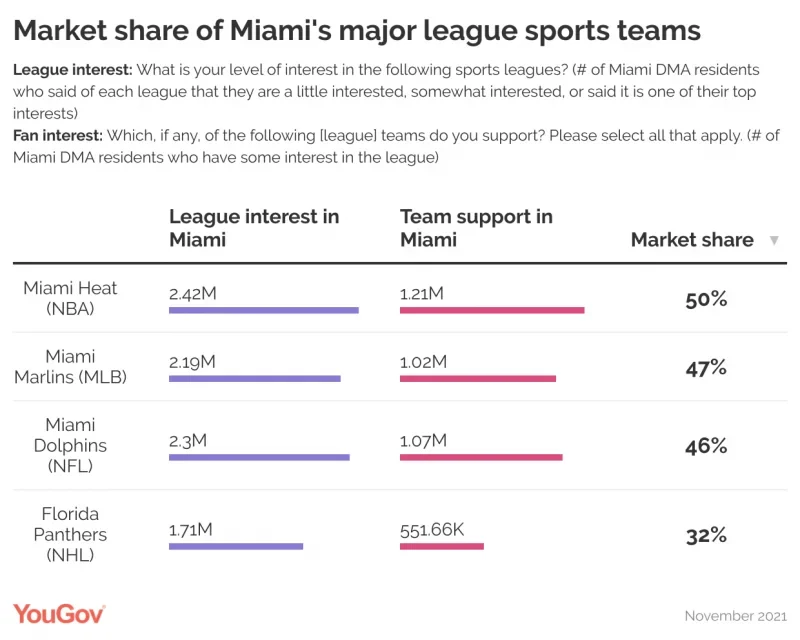
Miami market profile: How many sports fans cheer for the home teams?
The Miami Heat enjoy the greatest home-town market share of any of the four major-league teams in the city.
Periodically, YouGov will dive into a regional sports market and reveal local fandom of local clubs across the Big Four leagues.
YouGov Sport data shows 2.4 million adults living in the Miami – Fort Lauderdale designated market area are at least casual fans of the NBA and 1.2 million of these fans support the Miami Heat. This represents a 50% market share of fans. While Miami is a smaller sports market, the Heat is the sixth most popular NBA franchise in the league, according to YouGov data, likely due in part to its back-to-back championships in 2012 and 2013.

The Miami Marlins command a 47% market share of baseball fans in the greater Miami area, with one million of the 2.2 million MLB fans supporting the Fightin’ Fish.
The Miami Dolphins have a similar share of local football fans – 1 million of the DMA’s 2.3 million who are interested in the NFL cheer for the Dolphins, a 46% share.
The Miami market is smallest for the NHL, but the Miami-based Panthers also have the lowest share of local fans compared to other Miami pro clubs. In the Miami DMA, 1.7 million have some interest in the NHL, 551,600 of whom support the Panthers – a 32% market share. Looking closer at hockey team fandom, we see a significant portion of NHL fans in Miami who do not support any NHL team (27%). For the Panthers organization, this cohort would be more easily converted into fans, rather than luring away those who support other franchises.
The Miami DMA includes the counties of Broward, Miami-Dade and Monroe, accounting for a total population of 4.7 million. Neatly a third of this population doesn’t follow any sport, representing a significant opportunity for all major-league franchises in the area.
Methodology: YouGov Profiles is based on continuously collected data and rolling surveys, rather than from a single limited questionnaire. Profiles data is nationally representative and weighted by age, gender, education, region, and race. Learn more about Profiles.